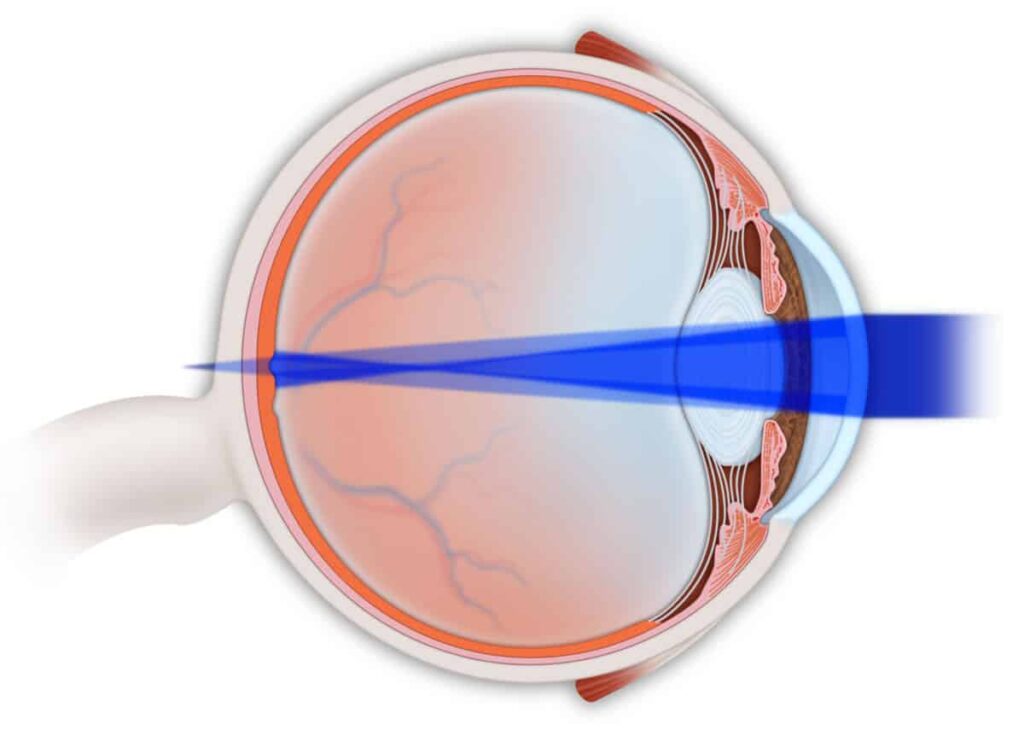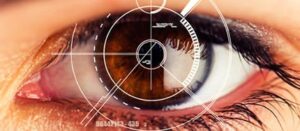
Astigmatism is a type of refractive error that affects how the eye focuses light. In order for clear vision to occur, rays of light must pass through the eye and land in a single point on the retina. The shape of the cornea, the clear front cover of the eye, directs light toward the retina. When the cornea is abnormally shaped (astigmatism), light does not come to a focal point at the back of the eye. As a result, vision is blurred.
SCHEDULE AN APPOINTMENT
If you would like to learn more about Astigmatism call +1 (800) 244-9907 to make an appointment at Central Valley Eye Medical Group.
FAQ
There are three primary types of astigmatism:
It is possible for both the vertical and horizontal meridians to be nearsighted are farsighted. It is also possible for one to be nearsighted and the other to be farsighted. This is referred to as mixed astigmatism.
There are also regular and irregular types of astigmatism. Regular astigmatism, in which the meridians of the eye are at perpendicular 90-degree angles, is the most common type. Irregular astigmatism is diagnosed when the meridians of the eye are not perfectly vertical and horizontal (not perpendicular).
The most common symptom of astigmatism is distorted or blurred vision at all distances. However, younger patients may not be able to accurately describe their vision. Instead, they may demonstrate symptoms such as rubbing their eyes, squinting, or complaining of eye or head pain, especially after visual tasks such as reading.
Astigmatism is a common structural abnormality in which the cornea is improperly shaped. Normally, this front cover of the eye has a rounded curve like a baseball. In astigmatism, the cornea is more oval, like an egg or a football. There is no clear cause for regular astigmatism. Irregular astigmatism may be caused by an injury to the eye. The following may also cause this eye condition:
- Heredity
- Lid swellings such as chalazia
- Corneal scars
- Keratoconus
Astigmatism is diagnosed during a comprehensive eye exam.
Astigmatism is the result of an irregularly shaped cornea. There is no proven way to reverse asymmetrical shape without surgery.
Astigmatism is one of the most common refractive errors to be diagnosed each year. It is estimated that 1 in 3 people has this condition. Many of the patients who develop this refractive error are children. While some young people do outgrow the abnormal curvature of the cornea, many require eyeglasses to correct blurred vision.
Treatment options for astigmatism include:
It is not likely that astigmatism will improve without treatment. In most cases, astigmatism gets worse as the eyes age. This can happen even if eyeglasses or contact lenses are worn to correct the refractive error.
Along with other refractive errors, astigmatism is relatively common in children. According to a study funded by the National Eye Institute, approximately 10% of preschool children have some degree of astigmatism. The same study revealed that approximately 23% of children aged 6 to 12 months have this condition.
In another study of just over 2,500 school-aged children (ages 5 to 17), researchers found astigmatism of 1.0 diopter or greater in 28% of participants. However, there is evidence that many children who develop astigmatism at a young age outgrow the condition.
Eye exams are important for children of all ages to identify vision problems that may keep them from learning and fully engaging in life.






